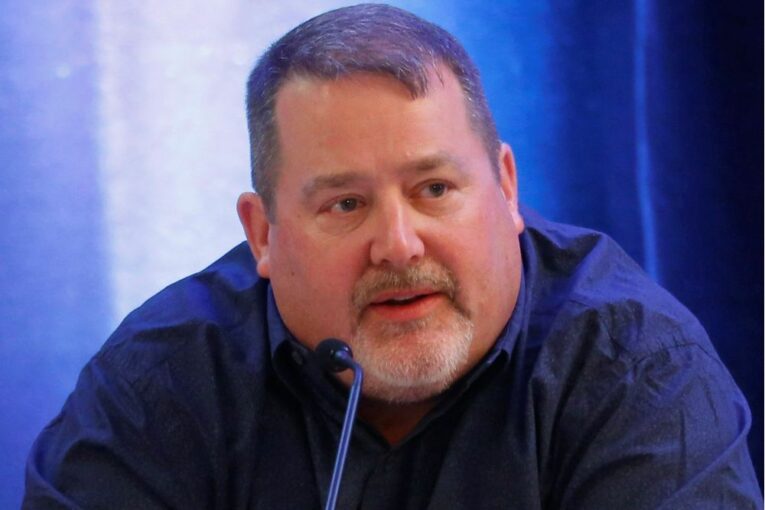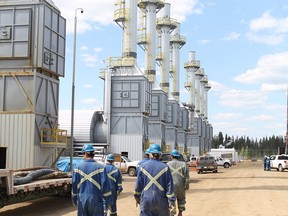
Sometimes, you’ve got to spend to grow.
Canada’s oilsands producers are set to open their wallets and direct more capital toward their growth plans in 2023 after several years of relative frugality.
Companies are introducing bigger capital budgets for next year, despite apprehension over the future direction of the global economy and a retreat in oil prices — even the potential effect of Alberta’s sovereignty act.
Over the past week, four of the country’s largest oilsands producers have unveiled bigger capital programs for 2023, with Cenovus Energy announcing Tuesday it will spend between $4 billion and $4.5 billion next year.
At its midpoint, that’s up 21 per cent from this year’s budget.
“The industry has really been in a real belt-tightening mode for most of the last two or three years, given the pandemic and everything else,” Cenovus CEO Alex Pourbaix said in an interview.
“Now, as balance sheets are improving, as commodity prices remain strong, I’d be surprised if we don’t see some (additional) production.”
The Calgary-based integrated producer said about $2.8 billion of its capital expenditures will be earmarked for sustaining capital that allows it to maintain base output.
About $1.45 billion will be directed to growing or optimizing operations, including its oilsands assets in northern Alberta, and for construction of the West White Rose project offshore Newfoundland and Labrador.
Another $500 million will help grow the company’s thermal oilsands business, adding about 100,000 barrels per day over the next two to five years, Pourbaix said.
Total production next year is forecast around 820,000 barrels of oil equivalent (boe) per day, an increase of more than three per cent.
“You’ve certainly seen (in) the media around the world about the present urgency of getting oil and gas to countries that need it. So, I think that’s a bit of a trend,” Pourbaix said.
“Although we’re pivoting to a modest amount of growth, the overwhelming field of growth coming is . . . organic.”

Spending has been rising in Canada’s oil and gas sector as high energy prices have boosted profits for producers, while also allowing them to pay down debt and return more money to investors.
Statistics Canada reported last week that capital expenditures in the country’s oil and gas extraction sector increased to $9.9 billion during the third quarter, a 50 per cent increase from a year earlier.
Capital programs for oilsands producers who have released their 2023 plans are up, on average, about 25 per cent, said Jonah Resnick, senior research analyst with Wood Mackenzie.
“They’re still going to be quite cautious with respect to how they spend it,” said Resnick.
“It’s not quite 2014 for growth in the oilsands and things like that, but there is definitely capital to spend on economic projects.”
Analysts say part of the increased cap-ex across the sector is being fuelled by inflation, although producers are also responding to strong commodity prices and additional pipeline capacity.
Prices for benchmark U.S. oil closed Tuesday at US$73.70 a barrel, down more than $3, as the market continues to digest the ramifications of the global economic slowdown and a price cap on Russian crude.
“You have higher capital budgets because you’ve got some incremental growth this year,” said Patrick O’Rourke, an analyst with ATB Capital Markets.
“They cut capital budgets down to the bone over the last several years: seismic, exploration wells, land purchases, things of that nature . . . are starting to creep back into the capital budgets here as well.”
Other issues are reverberating through global energy markets, including China beginning to loosen some of its COVID-19 policies.
Domestically, the province introduced its new Alberta Sovereignty Within a United Canada Act. Business groups such as the Canadian Association of Petroleum Producers (CAPP) and the Calgary Chamber of Commerce expressed initial concern about the potential effects of the bill on investor certainty.
The UCP government has said the legislation will undergo some changes this week.
“I suspect those initial comments about the bill were really directed at ensuring any legislation maintains investor confidence,” Pourbaix said. “I have not heard anything from investors worrying about that at this point.”
Asked if he’s concerned about its effect on the company’s investment, Pourbaix added: “It’s way too early to determine . . . but there’s a lot of hockey to be played, I suspect, on this bill for the time being.”
Recommended from Editorial
-

Varcoe: Canadian chamber warns ‘business could be caught in the middle’ of sovereignty act fallout
-

City solicitor sees no positives for Calgary in proposed Alberta sovereignty act
-

UCP caucus votes to propose changes to Alberta’s controversial sovereignty act
Last week, Canadian Natural Resources announced its 2023 capital program will climb to $5.2 billion, up about six per cent from this year’s level.
The new program includes $4.2 billion in base capital spending and about $1 billion designated for medium and longer-term strategic growth projects. The company forecasts its production will grow by four per cent, averaging about 1.35 million boe per day.
Pipeline capacity is no longer a nagging concern for oil producers, at least in the short term.
During last week’s investor day, Canadian Natural’s chief financial officer Mark Stainthorpe pointed out that with the Trans Mountain expansion project targeted for completion in late 2023, “egress is balanced well into the future.”
Meanwhile, Suncor Energy announced last week its capital spending will reach about $5.6 billion — up about 11 per cent from this year’s levels — while MEG Energy released a $450-million budget, which includes a 20 per cent increase.
Despite the recent market turmoil, high oil and gas prices are expected in 2023.
According to U.S. Energy Information Administration’s outlook report released Tuesday, the price of benchmark West Texas Intermediate crude is expected to average $86 a barrel next year.
“We’re going to be in for some continued volatility,” said Pourbaix.
“I feel we’re going to see a period in 2023 and maybe into 2024 of reasonably robust, although volatile, prices.”
Chris Varcoe is a Calgary Herald columnist.
You can read more of the news on source
